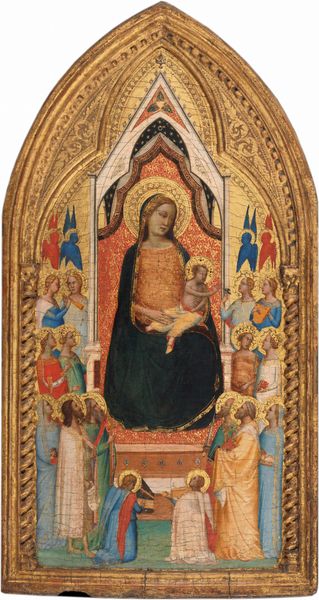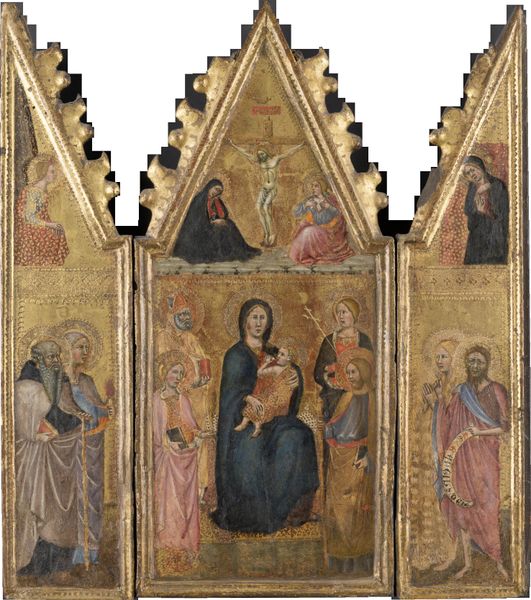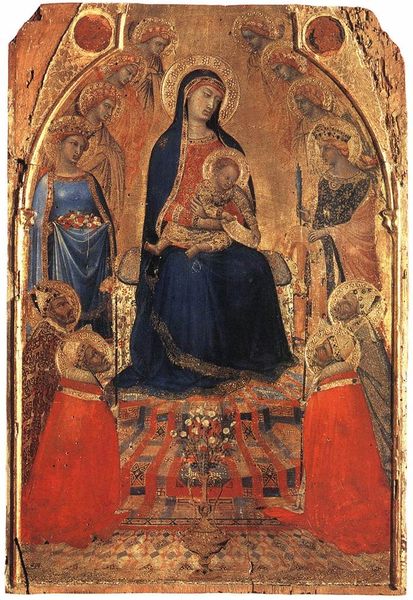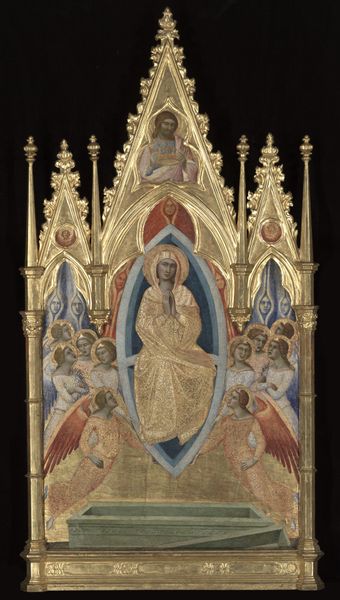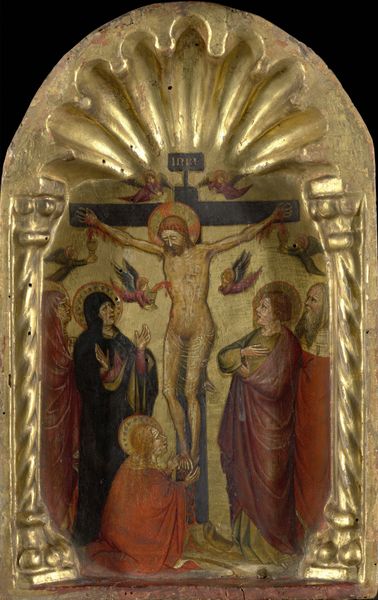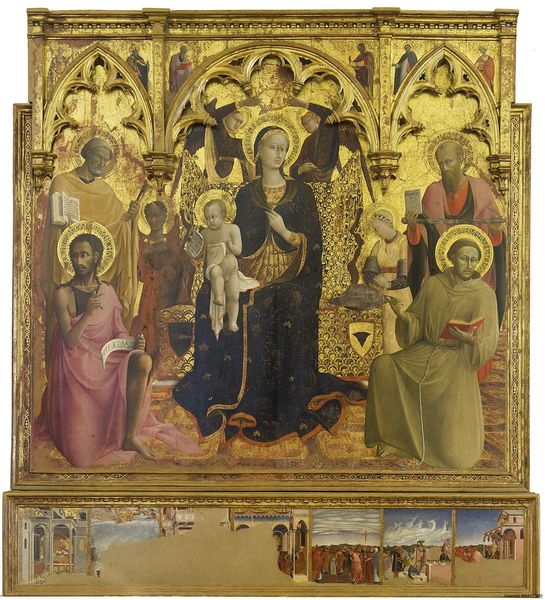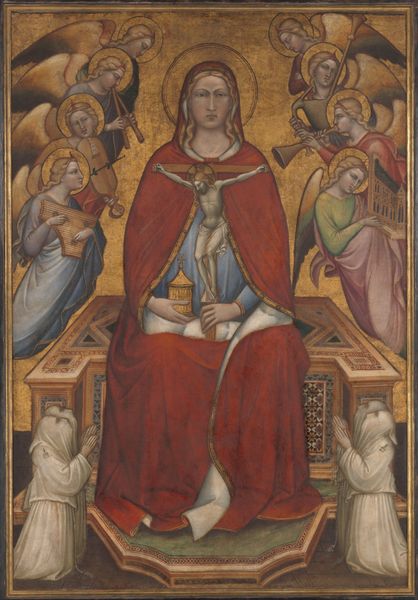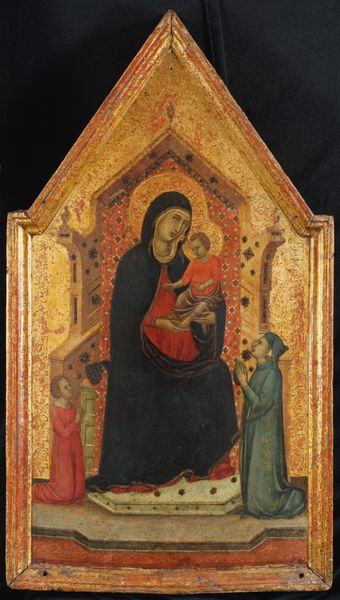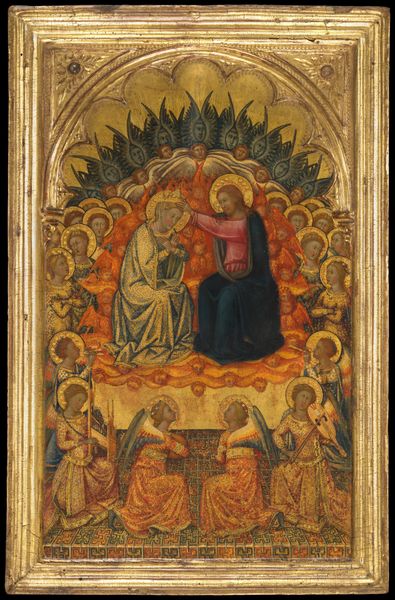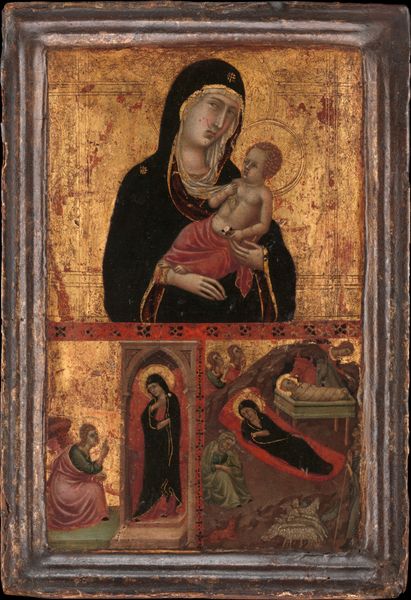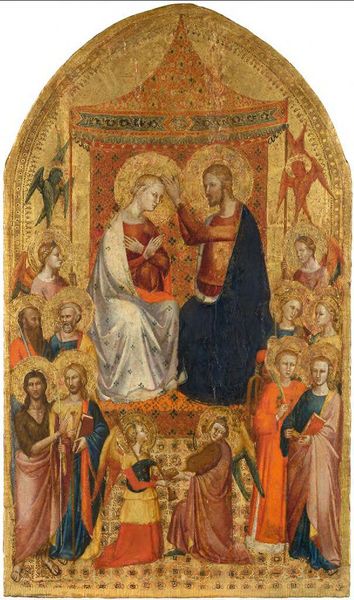
tempera, painting
#
portrait
#
medieval
#
narrative-art
#
tempera
#
painting
#
figuration
#
early-renaissance
Copyright: Public domain
Curator: Cennino Cennini's "Madonna and Child with Angels and Saints," created around 1400 using tempera, presents a compelling study in the evolution of early-Renaissance artistry. The scene, brimming with celestial and holy figures, invites reflection. What’s your initial impression? Editor: Visually, it feels remarkably serene. The composition, particularly the arrangement of figures around the Madonna and Child, creates a sense of enclosure and protected space, a warm, unified plane, in spite of its clear layering. Curator: Yes, notice how the artist uses gold leaf. It is applied not only as a background, signifying divinity, but also meticulously within the fabric patterns, thus enriching the texture of the painting’s surface. Considering the patron, how might this type of ostentation served social or religious needs? Editor: Undoubtedly, the abundant use of gold broadcasts wealth and status. Beyond mere display, its employment underscored the importance of religious institutions in late medieval society, a clear assertion of spiritual authority. Curator: Let's observe the Madonna's face. There’s a marked sense of melancholy. Note that in contrast, the other figures lack dynamic individuality, which subtly concentrates the viewer's attention on the central figures of the Madonna and Child. Editor: Indeed. This stylistic choice seems intentional, aimed at highlighting the role of Mother and Child within contemporary Christian religious imagination. It’s a tableau not just of faith, but one imbued with social values. How were works such as these typically commissioned and distributed? Curator: Paintings such as these were typically commissioned by wealthy families or religious confraternities for private devotion or to adorn chapels. This panel's size suggests it may have functioned as a portable altarpiece. Editor: So it brings questions to its cultural functions, how religious pieces permeated society at the time... This conversation makes me appreciate not only the technical aspects but its intersection with broader cultural values of its historical time. Curator: Exactly, delving into the painting, what seemed at first glance like just a scene of adoration evolves into a deeper examination of its era’s religious sentiments and material sensibilities.
Comments
No comments
Be the first to comment and join the conversation on the ultimate creative platform.
